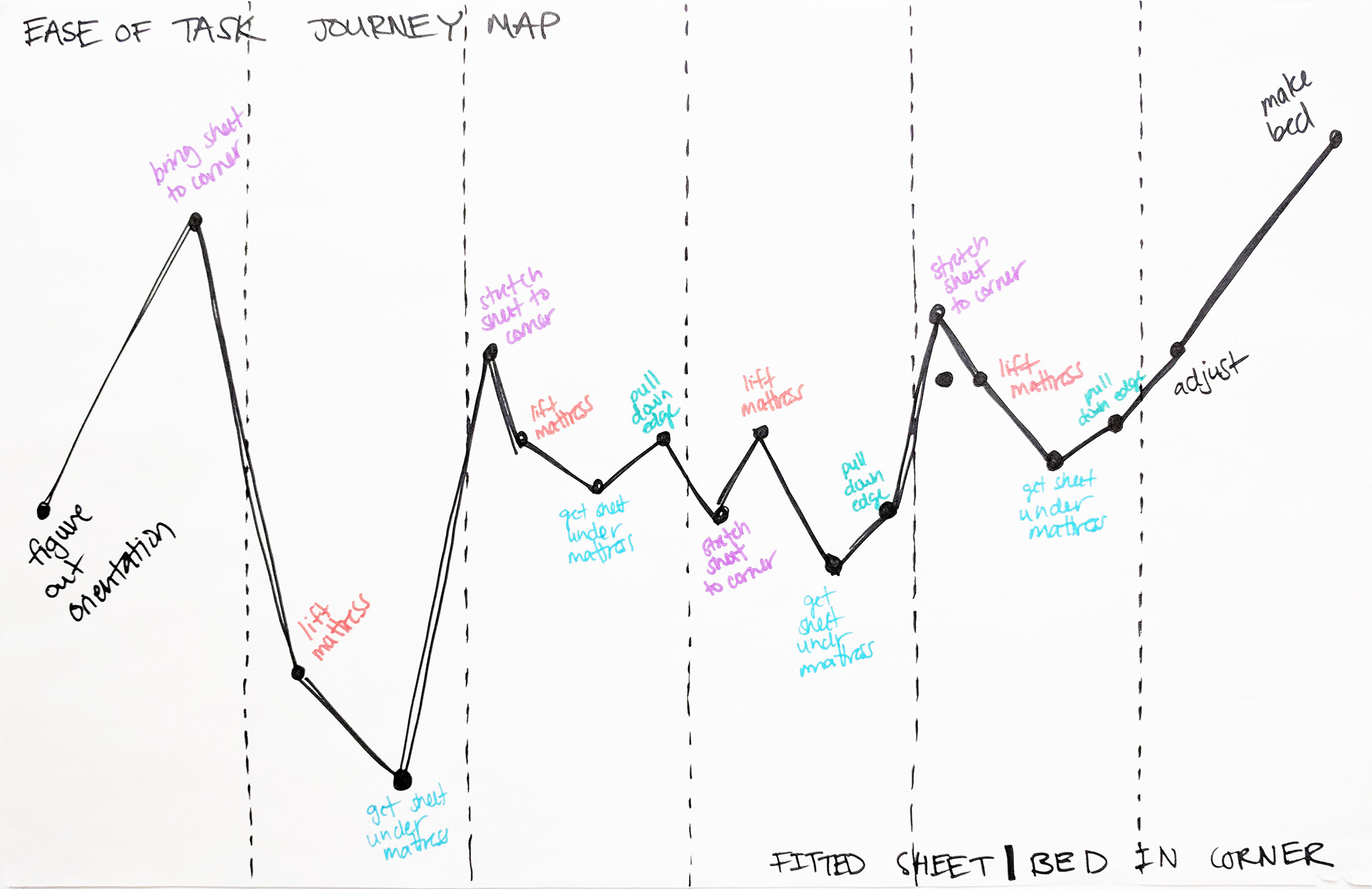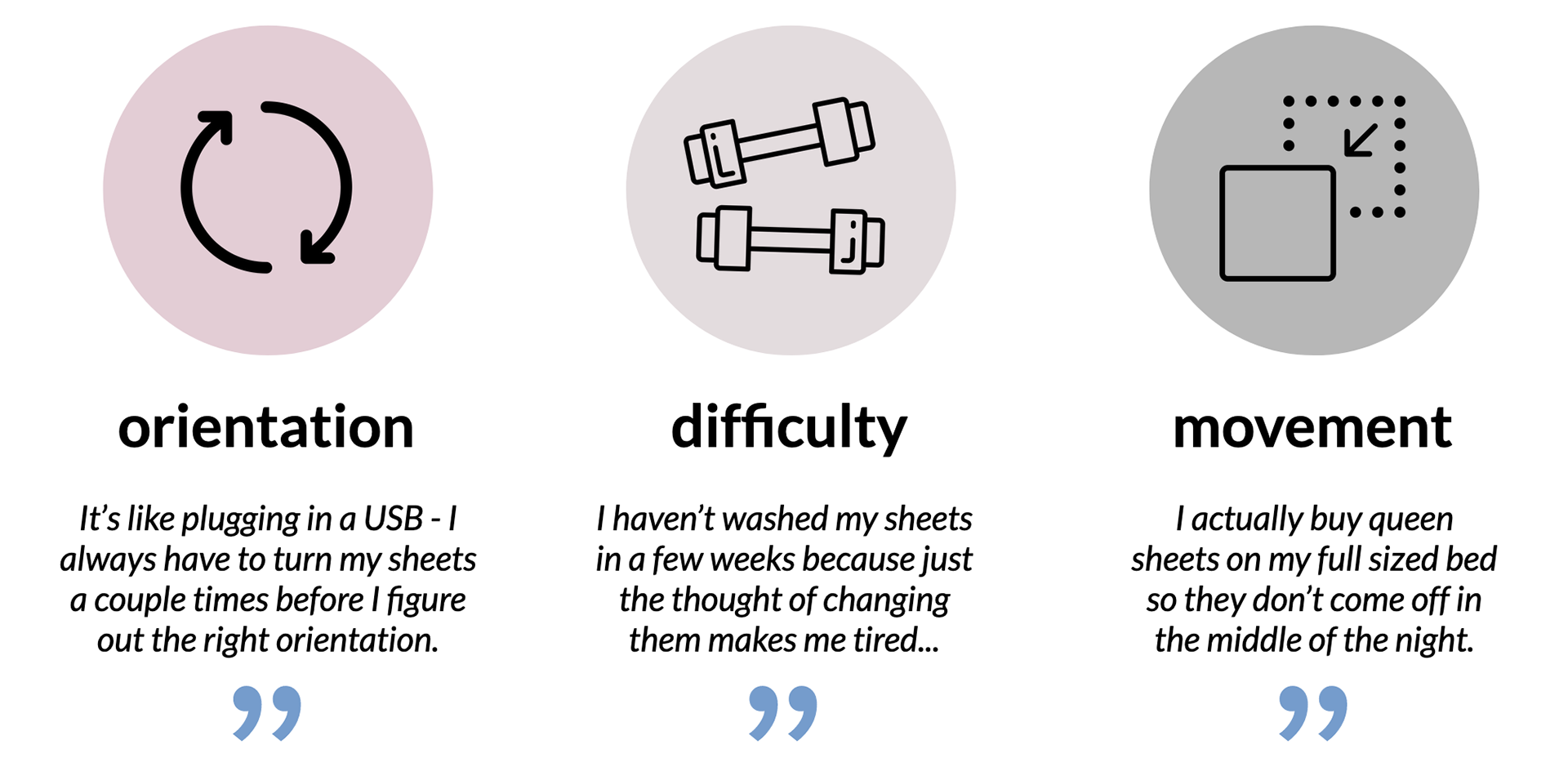kami: simple sheets for a cleaner bed
Kami is a fitted sheet and duvet cover set that reduces the time to change bedding by 33%.
my role
For my 9-month Master's Thesis at Northwestern's Engineering Design Innovation program, I decided to improve an everyday household item: bed sheets. There hasn't been a major innovation in bedding since the fitted sheet was invented over 60 years ago, and yet, many of us consistently find the process of changing and washing sheets a big chore. Through months of user interviews, testing prototypes, and iterating, I developed Kami, a simple sheet set that's easier to use and keeps your bed cleaner for longer.
deliverables
• High fidelity final product (fitted sheet, duvet cover)
• Brand design guidelines
• Website screens
• Research insights
• Three rounds of mock-ups and prototypes
• Product demonstration videos
• Visual presentation
• Brand design guidelines
• Website screens
• Research insights
• Three rounds of mock-ups and prototypes
• Product demonstration videos
• Visual presentation
skills
• Product design
• Product development
• Project management
• Design research
• User testing
• Prototyping
• Brand strategy
• Product development
• Project management
• Design research
• User testing
• Prototyping
• Brand strategy
how might someone living in a small apartment more easily keep their bed clean so that they feel more comfortable and healthy in their sleeping space?
the sheet
The fitted sheet does not have elastic and folds completely flat when not in use. Each corner securely wraps around the bed and snaps to itself, so you don't need to lift up the mattress to tuck it under.
• Able to put on without lifting mattress
• Apparent alignment
• Easier to put on
• Stays secure over time
• Folds flat
• Satisfying to remove
the duvet
The duvet opens from middle so one person can more easily slide the comforter inside. It also has an additional layer than can be folded over when the bed is not in use to keep sleeping surfaces clean.
• Protects bedding when not in use
• Apparent orientation
• Easier to put on
• Fewer steps
• Less physical process
functional design requirements
After interviewing and observing 24 users in-context, I mapped the journey of changing sheets to identify pain points and corresponding functional design requirements.


I then addressed these requirements by systematically testing different fastening mechanisms with placement locations on the product. After in-context user-testing of each prototype iteration, I determined the best solution from the emotional themes that emerged.





I was reminded of the importance of emotional design requirements during testing, when all users cited the ease-of-removal as their favorite feature of the kami fitted sheet.
branding
For positioning of the product and brand, I referred back to the needs and values of my target user group. These urban Millennials and Gen-Zs live in smaller spaces, just started working full-time, and thus, often value minimalism and lasting quality.
I named the product Kami, which is the Japanese word for paper, both as a nod to it's unique folding functionality, as well as to evoke the feelings and values associated with Japanese product design.
I then looked at competitor products that target a similar demographic, like Brooklinen and Parachute, to price the product in the range of high-end, but not luxury.

brand mood board

competitive price assessment
To create a design language across the different products, I adopted beautiful and functional visual touches:
• The Signature Stitch on the fitted sheet helps the user align the product on the mattress
• The snaps are a highly-visible, complimentary color to stand out on the fitted sheet
• A subtle pattern indicates orientation
• The brand tag demonstrates attention to detail and another visual reminder of the brand






With an online look book, I also demonstrated that a simpler sheet set could be marketed to anyone, not just my target customer. Specifically, I also called out college students, families with small children, and pet owners as users that could benefit from a product that keeps sleeping spaces cleaner.




